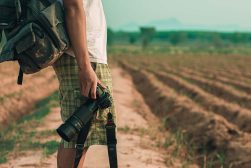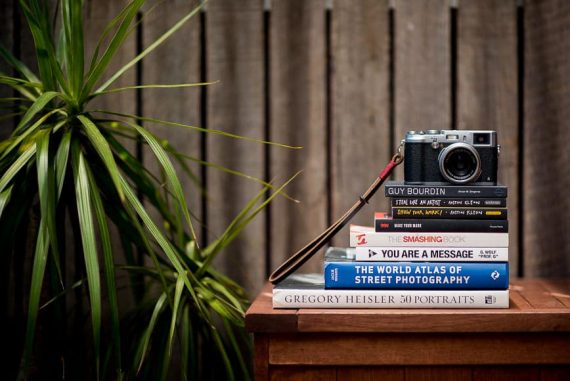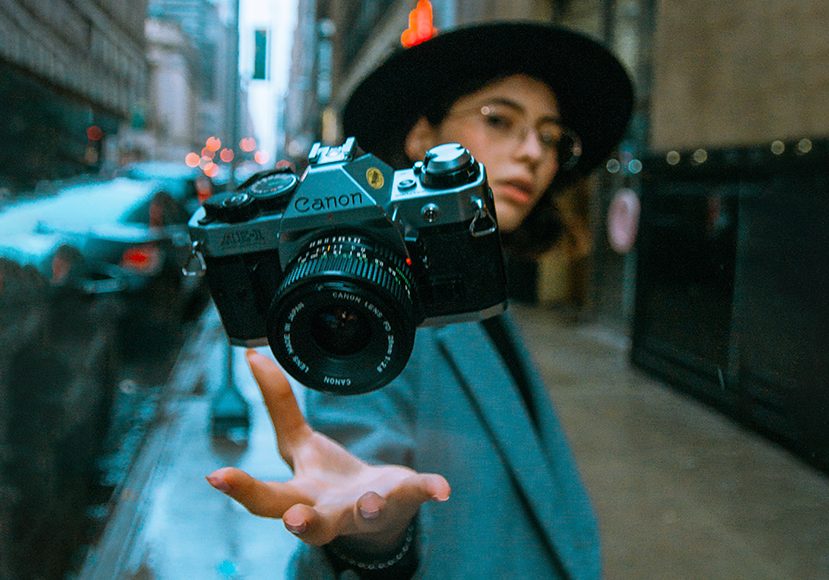
How to ACTUALLY get into Photography in 2024 (+ Pro Tips)
Find out the best way to get into photography in this must-read guide! Learn how to get started or take your shots to the next level, ready for success in 2024!
Learn | Photography Guides | By Ana Mireles
Taking pictures is something everyone regularly does. Years ago, if you wanted to take photos you needed to bring the camera for that purpose – it was a deliberate decision.
Now, because of mobile phones, we have a camera with us all the time, so we take lots of images without even thinking about it.
It has become part of our everyday life, but that doesn’t mean that everybody wants to know how to get into photography.
But if you’re already looking into this article, it’s because your level of interest is above the average shooter.
There isn’t a hard rule that you need to follow to get started in photography, so whatever you’ve been doing so far, is already a good start.
In this article, you’ll find a series of photography tips that will help you trace a map to get you from where you are now, to where you want to be.
Photography is important in today’s world. Here’s how to start.
How to get into Photography – 15 Tips for 2024
There are different ways to get into photography. These tips are meant to help get you started as a beginner photographer, from finding inspiration to choosing the best camera gear. Here are steps on how to get started with photography as a beginner.
1. Review your photographs

Credit: Jakob Owens
It doesn’t matter if you shoot with your iphone or you already own a camera – if you’re interested in photography, you already have tons of photos.
Go through your camera roll, Instagram account, or any other place where you save the photos you take and find patterns.
What do you like to photograph the most? Your pet dog, your friends, random scenes on the street? Finding your interest is one of the first and most important steps you can take.
If you start getting serious about photography by capturing images you don’t like; you’ll probably drop it quite soon.
This doesn’t mean that you shouldn’t grow and experiment, it’s just to help you learn about yourself and understand your passions.
2. Learn to use your camera
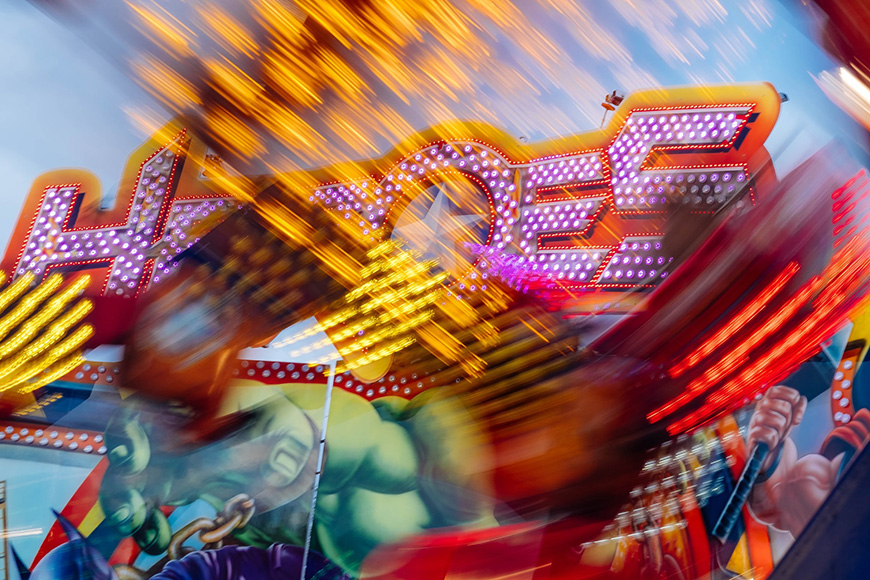
Credit: Tom Levold
This is an important first step on how to start photography.
You need to take control of the final image. Most modern cameras will indeed deliver a well-exposed photograph if you use them in Auto mode, but there’s more to it than that.
The camera settings that you use have an impact on your photos way beyond the proper exposure.
For example, the shutter speed will either freeze a moving subject or capture the motion blur. The aperture is greatly responsible for the depth of field; in other words, how much of your image is in focus. Those are decisions that you should make yourself, not let the camera decide for you.
That’s only considering the three parts of the exposure triangle, but there are many other camera settings that you need to understand to improve your photography.
You should also get acquainted with exposure mode and focus mode, metering modes, white balance, file format, and many other buttons and settings.
The main goal is for you to reach a point where you can use the camera in Manual. To get there, you can start by using semi-automatic modes to understand one tool at a time. This will make it easier.
How Much Do You REALLY Know About Photography?! 🤔
Test your photography knowledge with this quick quiz!
See how much you really know about photography...

3. Pass from taking photos to making them
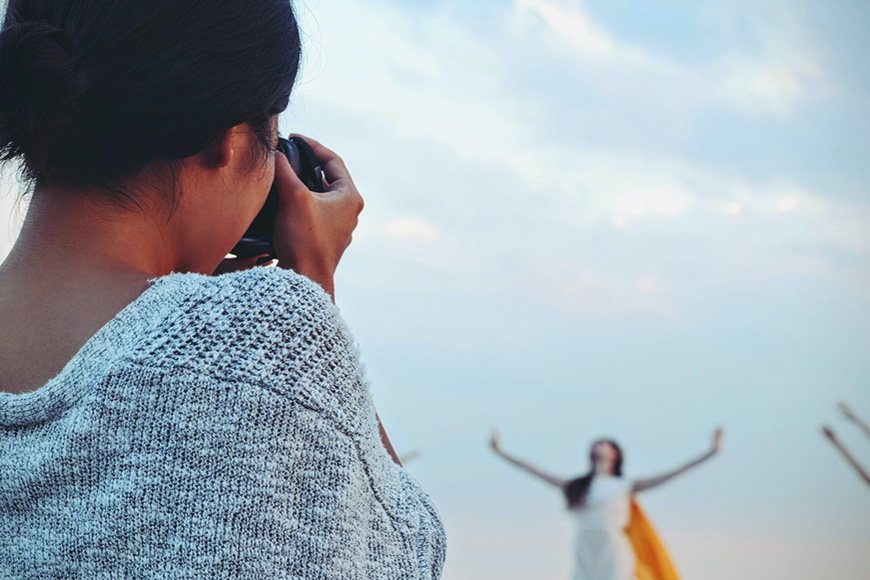
Credit: Tim Gouw
As I was saying, continuing to photograph what you love is the best way to stay focused. However, to take it to the next level, you need to start taking photos with a purpose.
It is said that getting into photography starts when you consciously make your images rather than wait for them to come to you.
Let’s say that you like street photography. Well, don’t just go about it as usual – instead, set a date and organize yourself a photoshoot.
Pick a subject and a location, gather your camera equipment, and set a goal for the day. Treat it as if it were a job that you are assigned to do.
Imagine that you have an editor that gives you a briefing for an article and you need to deliver the photos at the end of the day.
Don’t worry if you don’t actually capture your best photo the first time that you try this. It’s a process and you will keep improving the more you do it.
4. Consider your lifestyle
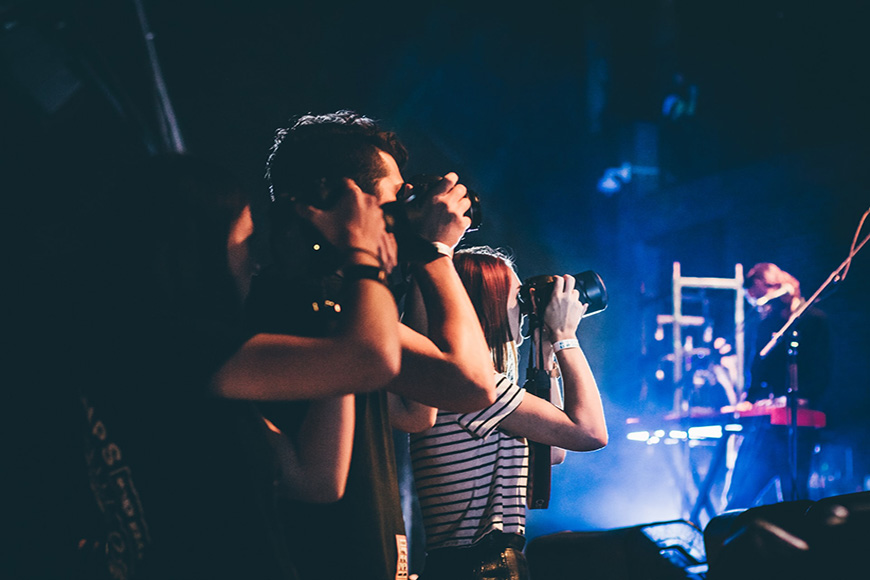
Credit: Zachary Staines
If you don’t like working on weekends and during the holidays, you wouldn’t be pursuing a career in tourism, right?
Well, the same happens with a photography career. Each direction you take comes with a lifestyle choice. For example, event photography means you don’t need a studio; you’ll probably be working evenings, etc.
If you like night landscape photography, but you don’t like staying up late, you’re going to have a hard time doing it.
If you enjoy fashion photographs, but you’re not a people’s person, then it won’t be easy directing a model and dealing with all the people that are involved in that kind of photoshoot.
My point is that you can like a certain kind of photography to look and admire, and also specialize in a different kind.
There’s no conflict in having different tastes in what you enjoy and what you do, but it’s important to learn how to recognize each one.
5. Experiment with all kinds of photography
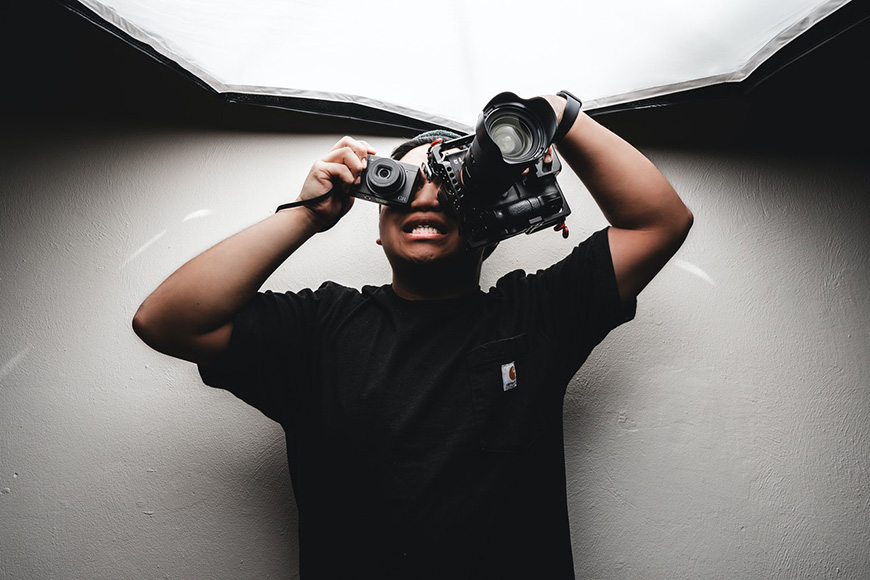
Credit: Jake Ryan
One of the most important things when getting started with photography is to experiment with your photography. There is no one way of answering how to do photography.
To be able to find the type of photography that you like to do, you need to try them out. You don’t have to invest much in doing this.
Without needing any special equipment, you can try street photography, documentary, portraits, etc. Maybe even some macro photography depending on the lens that you own.
Another great way to learn and experiment is by stepping away from digital photography. Ask your relatives if someone has a film camera that you can borrow. If not, check out second-hand shops and you’ll probably find one at a reasonable price.
Another way to experiment with camera settings like aperture, shutter speed, and iso is by using artificial light. You can rent a studio with the equipment for half a day and try out some portrait photography or product images.
For more specialized photography, you can rent photography gear for a day or a week before investing in any expensive gear. For example, you can rent a tilt-shift lens and try out architecture or real estate photography.
If you’re going to travel to a place that offers unique opportunities for your photography, get prepared and rent the equipment before you go. For example, if you’re going to the Bahamas, you can try some underwater photography.
6. Attend a class
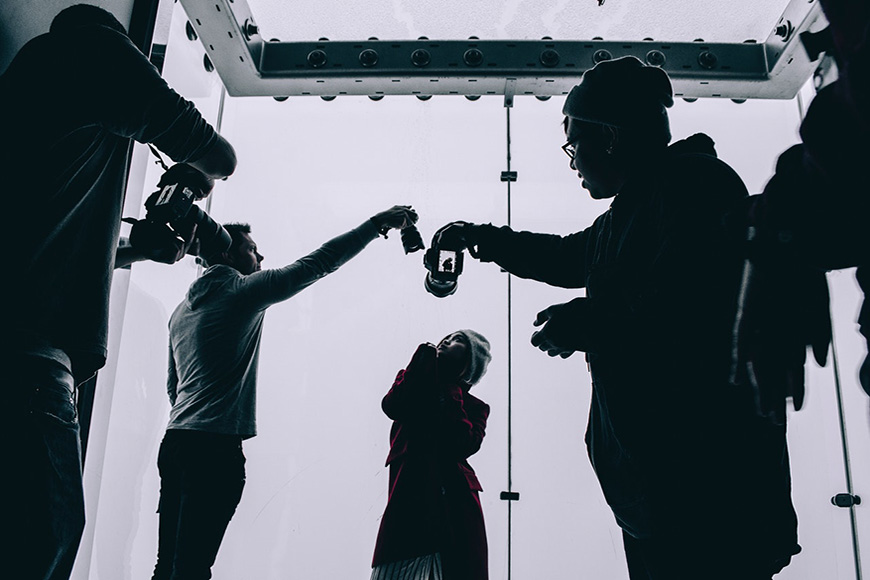
Credit: Karl Solano
Online learning is wonderful, it’s accessible from anywhere at any time, but you’re also missing out on many advantages that physically attending a class can give you.
There are lots of choices, depending on your budget, time availability, and end goal. You can choose it as a career path and study Photography at university, or you can attend single-day workshops.
The important thing is that learning photography face-to-face and hands-on will give you access to professional equipment from the academy or the photographer that is giving the course.
You’ll also have instant guidance and feedback about what you’re doing. And last but not least, you’ll meet other aspiring photographers that will become a valuable network and provide precious support.
Of course, complementing that with books, magazines, photography clubs and online resources is the best way to go. You should never stop learning.
7. Involve your friends and family
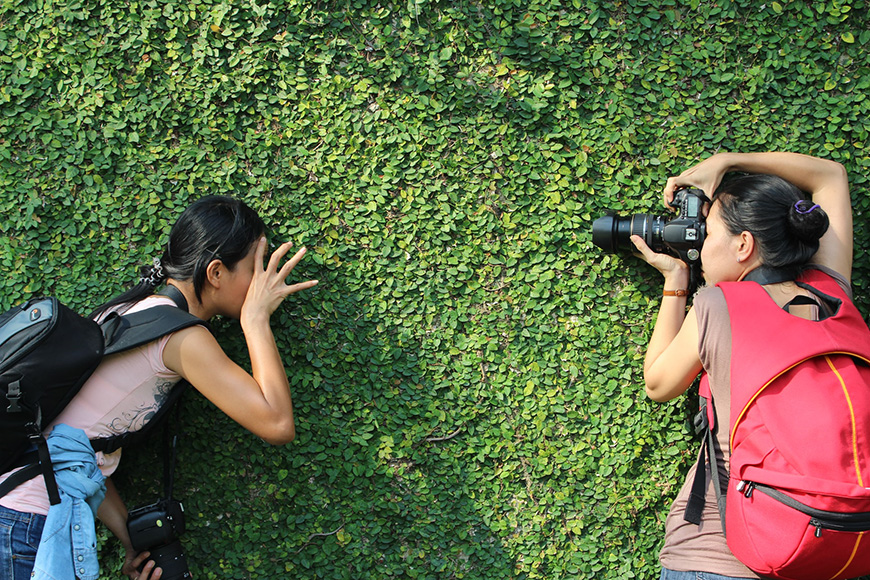
Credit: Tam Nguyen
All beginner photographers use their friends as the subject of their images; they are the best models. If you are starting photography, family members and friends are great subjects to start with.
You already know them, so you’ll feel comfortable taking their photo, and you can really capture their essence.
Also, you’ll find that often photography is a two-person job. Perhaps you’ll need another pair of helping hands to hold a reflector or a Speedlight.
When you’re starting out, you probably don’t have the budget to hire a professional assistant, so you can always ask your friends or your family. As you grow, the first clients are often family and friends too.
If you attend a photography course, make friends with your classmates because you can help each other when you’re getting started in photography.
8. Reach out to professional photographers
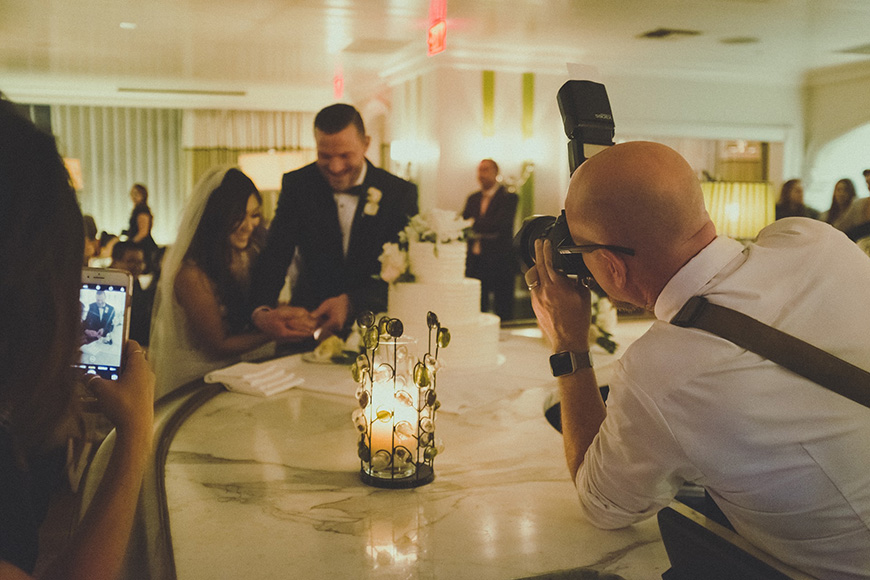
Credit: Neonbrand
There’s nothing better than learning from someone who has already been there. Books and courses are great, but the tips and motivation you can get from a professional are priceless.
It might be scary at first to reach out, especially if you don’t have a lot of experience and confidence, but you’ll be surprised at how open they can be.
This is, after all, a rewarding experience for them as well. A mentor can give you all sorts of information, so it’s worth asking, and they will enjoy helping you.
A mentorship can just be a monthly meeting for some feedback on your portfolio, exchanging emails if you have questions, or even tagging along to a photo shoot.
Maybe at some point, you can become their assistant, that’s of course if you’re planning to take up photography as a profession.
Do consider that professionals have busy schedules, so try to be concise and honest when you contact them.
Let them know what you’re looking for and why you think they would be a good mentor for you. Don’t sound like you sent the same email to a thousand people, but don’t over flatter them either.
To do this, you need some information before contacting them. Make sure that they actually fit your interest. If you want to learn about sports photography, don’t reach out to wedding photographers!
Ask for some concrete advice on how to get into photography. Or you can propose to schedule the first meeting but make clear that you are willing to fit in with their availability and schedule.
There’s no one way to do it, just be polite and be yourself. Think about how you would like to be approached if someone asked you.
9. Invest in the right gear
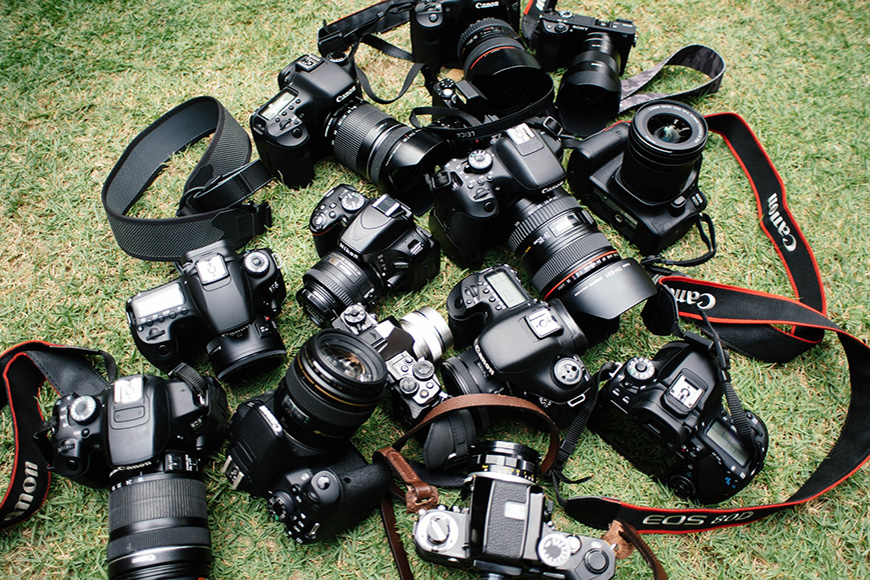
Credit: Chuttersnap
You’ve probably already noticed that pursuing photography is very expensive, both as a hobby or as a career.
And yes, it’s true that the camera doesn’t make the photographer, but there are limitations to what you can do if you don’t expand and upgrade your gear.
So, the best that you can do is invest in the right gear for your level and the type of photography you do.
There’s no need to go out and buy the most expensive camera on your first day. You also don’t need to buy a super-telephoto lens if you’re going to be photographing studio portraits.
Do some research before buying equipment you might never use, or you don’t need yet. This is really important because photographic gear, as with most technological devices, may become obsolete in short periods of time. So, what to get first?
As much as smartphones are doing wonders, if you want to get into photography, you need a camera. The best camera for a beginner photographer is the one that you have or you can afford.
For a good starter camera, I recommend that you use a DSLR or mirrorless camera – this way you can work in manual mode and learn how to control the exposure triangle. This refers to the shutter speed, the aperture, and the ISO.
A mirrorless or DSLR camera also allows interchangeable lenses, which is the next big thing that you need to consider. Many people say that the lens is even more important than the camera.
Many DSLR cameras are sold with a kit lens; this is a good place to start. Keep in mind that you’ll have to upgrade when you get more serious, but this will allow you to experiment and determine which one to buy next.
A tripod is a good accessory to start with. After that, you’ll find a long list of camera accessories that you’ll need, but that can be when you progress further as a photographer.
This is a very basic setup, but you can start with whatever you have. My best advice is to understand what you want and research what you need to do it.
10. Learn post-production
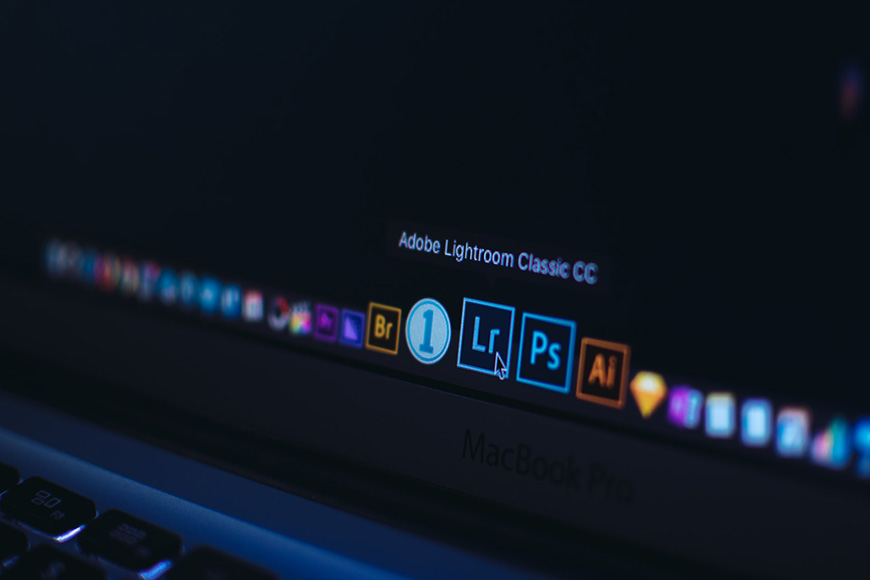
Credit: Szabo Viktor
Often in the professional field, a photographer and a retoucher are two separate professionals. However, all photographers need to do at least some basic photo-editing.
Who knows: maybe the branch of photography that you’re into turns out to be post-production. You can look for free Lightroom tutorials online that can help you with this task. You can also enrol in online courses or attend an academy.
There are many programs for post-processing images, and choosing the right one when you are just starting can be difficult.
The industry standard is Adobe Cloud. Here you’ll find the most famous apps Adobe Photoshop and Adobe Lightroom. They require a membership, but you get a 7 day trial for free and 14 days refund period this way you can see if you like them.
There are other paid options aside from Adobe such as Luminar or Capture One – you can see our various software reviews right here on Shotkit before making your decision.
If you prefer, there are some free photo editing programs like Gimp. The best thing about these choices is that they are risk-free. If you don’t like them, just delete them, and you don’t lose any money.
11. Practice, practice, and practice some more
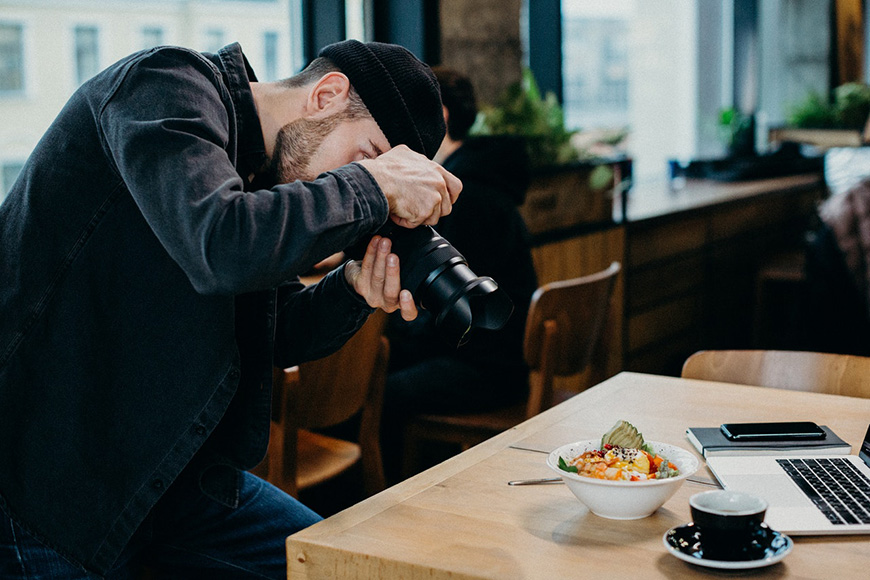
Credit: Cottonbro
There are indeed lots of rules and theories involved in photography, but it’s also true that without applying them, you wouldn’t be much of a photographer.
The best way to get into photography is by taking photos. Many people experience a sort of block when they start, but if this happens to you, don’t worry because it’s normal.
Something that you used to do and enjoy naturally becomes harder when you try to remember all the things you’ve read and learnt.
When you start to overthink things, you end up doing nothing. Just remind yourself that there is nothing wrong with making a mistake. Actually, that’s the only way to learn.
12. Build a good portfolio

Credit: Brooke Lark
The portfolio is like your business card. It will be your introduction to people who are just seeing your work for the first time.
That’s why you need to put your best work in it, display your skills, and keep it concise. It’s not easy to put a good portfolio together, but it’s worth the effort. You’ll also have to put some effort into building a photography brand.
You don’t need to have big clients to make your own portfolio. You can use things that you have at home or develop a project as if it were for the client.
For example, if you want to be a commercial photographer, use the products that you buy for personal use, and photograph those.
You can take an amazing photo of a Coke bottle and put it in your portfolio without waiting for Coca-Cola to hire you to do it. Just be honest about it, never claim that a photo was for a client when it wasn’t.
13. Get Inspiration
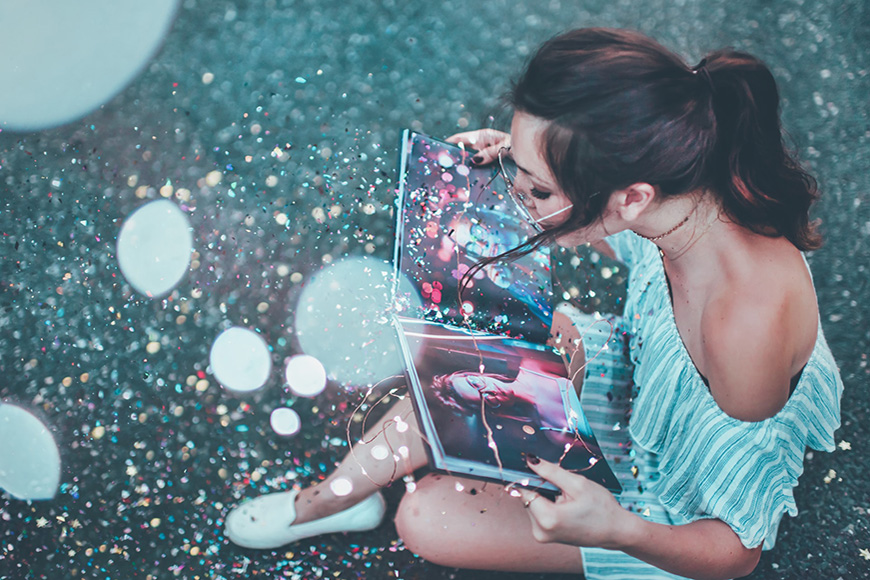
Credit: Thought Catalog
As well as always learning, you also need to keep getting being inspired. You can get inspiration for your photos from everywhere!
Look at books and magazines, not only to stay up to date but also to know what’s been done before.
Visit photography museums and galleries. Talk to other colleagues and your mentor to see what they are up to.
And of course, the Internet is the biggest source there is. There are many free resources at your disposal, from Pinterest and Instagram for following your favorite accounts and photographers, to Google Arts and Culture to see renowned artworks from around the world.
14. Find and develop your style

Credit: Oscar Keys
Style is something that makes people recognize that a certain photographer made a picture.
Your style is the way you see and represent the world. That’s what will make your work stand out and what will make a client choose you over a different photographer.
It’s not easy to find and perfect, so don’t rush it. Take your time and improve your skills. The style will come along naturally.
It can be from the topics that you photograph, to the settings that you use to your post-processing techniques.
15. Network
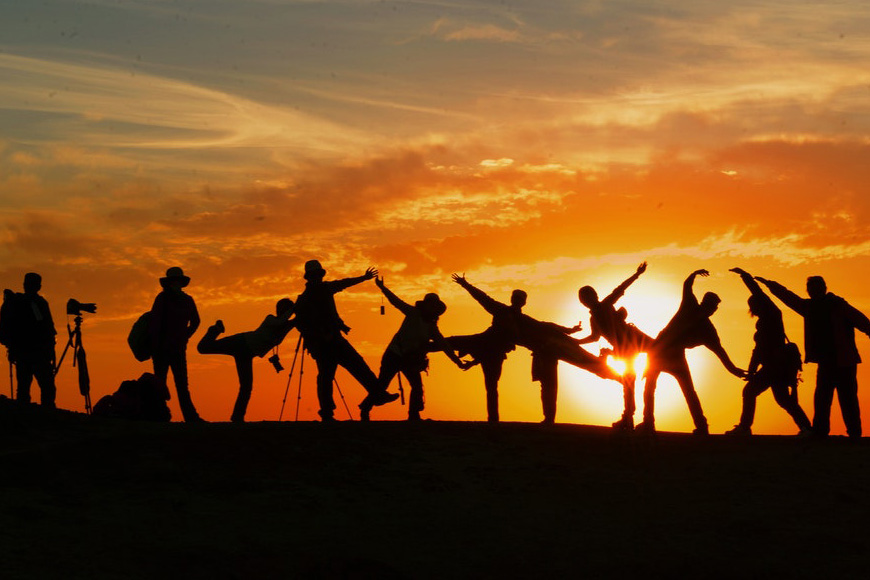
Credit: Pixabay
Involving your friends and family is great because they are always there for you, but they probably won’t know much about photography to help you grow.
Your mentor might know a lot about photography, but won’t have enough time. So, you need to broaden your network.
You can do this by attending exhibition openings, joining photographic clubs, or drop by a local art school to see which events they are hosting.
Otherwise, you can try reaching out to others in the same way you did to your mentor. This can be emailing local photographers that you can later meet, or start message conversations with photographers you follow on social media.
Speaking of online networks, you can find plenty of Facebook groups dedicated to photography – even Shotkit has a private one (see if you can find it!) There are also specific websites like 500px or Adobe Behance.
It doesn’t matter how you build your network; the important thing is that you have one. From there you can get inspiration and feedback for your own work.
You can also get advice and reviews about camera gear, contests, or exhibitions. You can join or organize day trips to photograph events or sites as a group if that’s the kind of photography that you’re interested in.
If not, you can get together to split the cost of renting a studio or hiring a model, etc. There’s no end to the benefits of building a network.
How To Get Into Photography FAQ
What do beginner photographers need?
To get started, you need a camera, a lens, and a will to learn. That’s it! Of course, you can add more equipment as you go, but starting with the minimum will allow you to focus on getting the basics down before you move onto more complicated setups.
What qualifications do you need to become a photographer?
It really depends on the job, as photography is a very broad field. Some specialized types of photography require a bachelor’s degree, but many professional photographers bypass the formal schooling and simply build up experience and on-the-job training to land themselves where they want to be.
How do I start a career in photography?
The first step is to learn the craft. You can do that by self-study and practice, with schooling (such as a college or university degree), or by attending workshops and learning from mentors. From there, decide what type of photography you want to pursue and start creating. Building up a reputation for yourself through word of mouth or social media can help get your career off the ground.
Final Words
The sea of information about photography can be daunting, confusing, and tempting at the same time. I hope this article helped you overcome any doubts on how to get started in photography.
Starting a photography journey is an exciting moment, and you should enjoy it. Be bold and photograph as much as you can. The most important thing is that you stay motivated.
If you have any more doubts, the Shotkit team is here to help. Check out the guides and articles that most interest you and post any questions you have.

Check out these 8 essential tools to help you succeed as a professional photographer.
Includes limited-time discounts.







